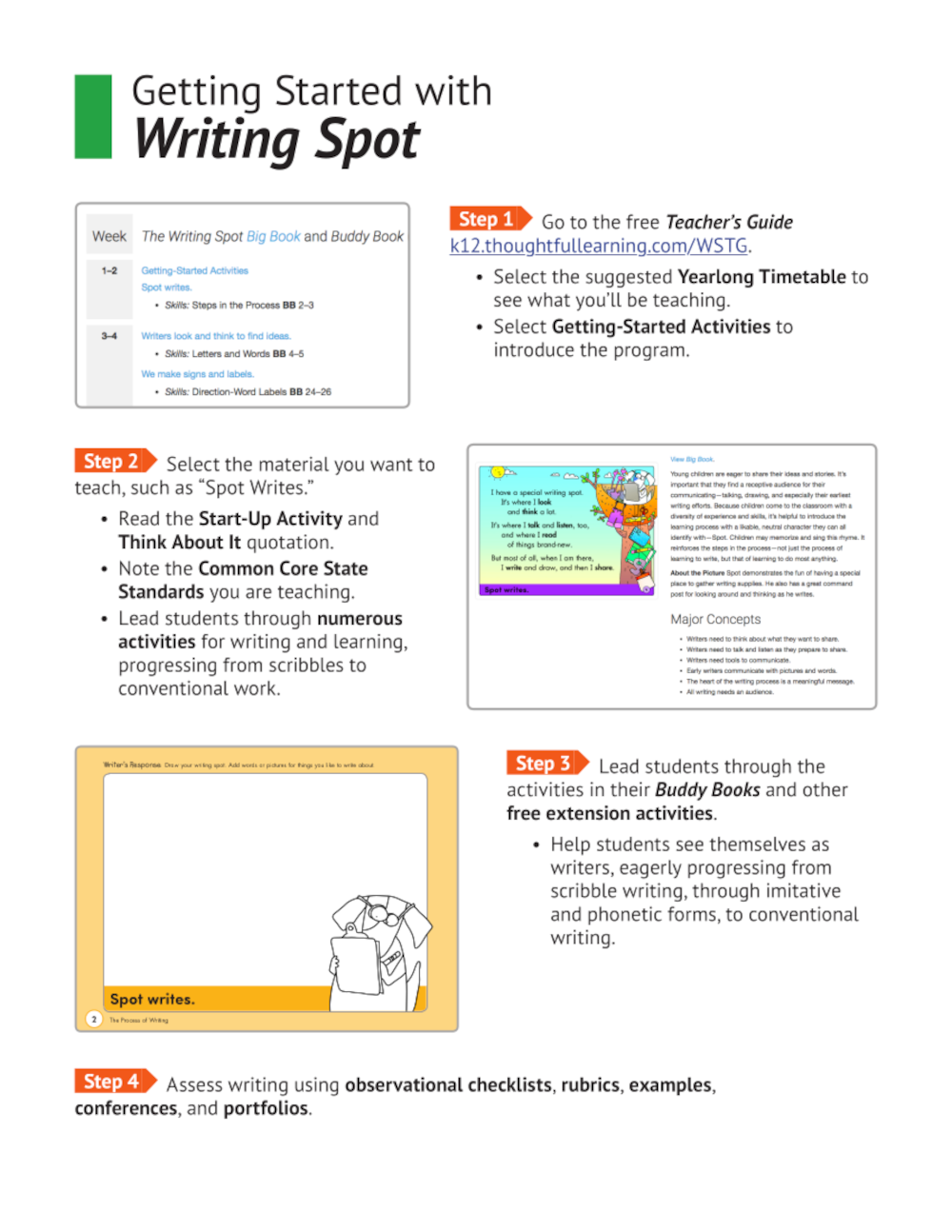How is The Writing Spot Big Book organized?
The Writing Spot Big Book overflows with lush illustrations that you present to your class to introduce a lesson. Each page of the Big Book is supported by pages of activities in the Buddy Book. Since the Big Book is free online, you can present it on any screen with Internet access, from your phone to your interactive whiteboard.
Kindergartners enjoy following the writing adventures of Spot, a dog who inspires and encourages young writers.
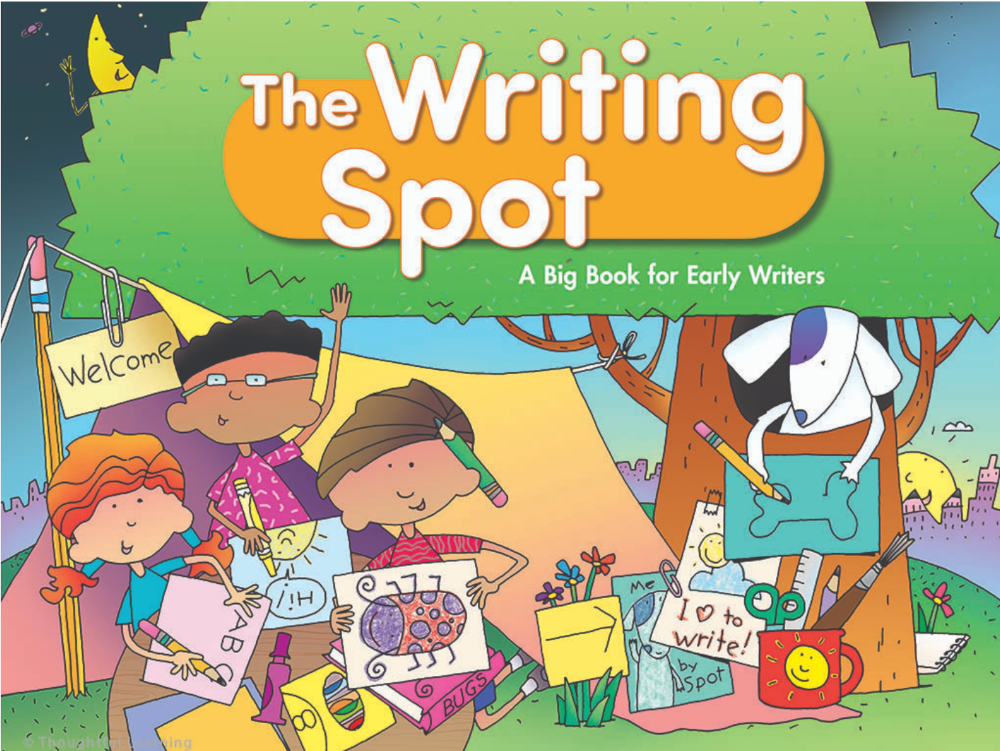
The Big Book features five main sections:
- The Process of Writing section helps kindergartners think of themselves as writers. They learn to look and think, talk and listen, read, write, and share.
- The Forms of Writing section inspires kindergartners to create notes, cards, lists, journals, stories, signs, and labels. Pages in the Buddy Book provide room for the work.
- The Tools of Learning section shows students how to learn together and use computers as they learn.
- Word Study/Phonics helps students form letters, use sounds, build words, and build sentences. It also helps them have fun with words.
- The Student Almanac/Theme Pages teach high-interest vocabulary for birthdays, feelings, friends, food, exercise, and much more!
Take a Tour!
Go directly to the free online Big Book (available with the Teacher's Guide). Or you can page through highlights in one of these ways:
What's in The Writing Spot Buddy Book?
The Writing Spot Buddy Book provides activities for each page of the Big Book. Activities include fun illustrations for students to color and plenty of space for writing and drawing. Get your students started by reading them the instructions on the page. You'll find activities for each section of the Big Book.
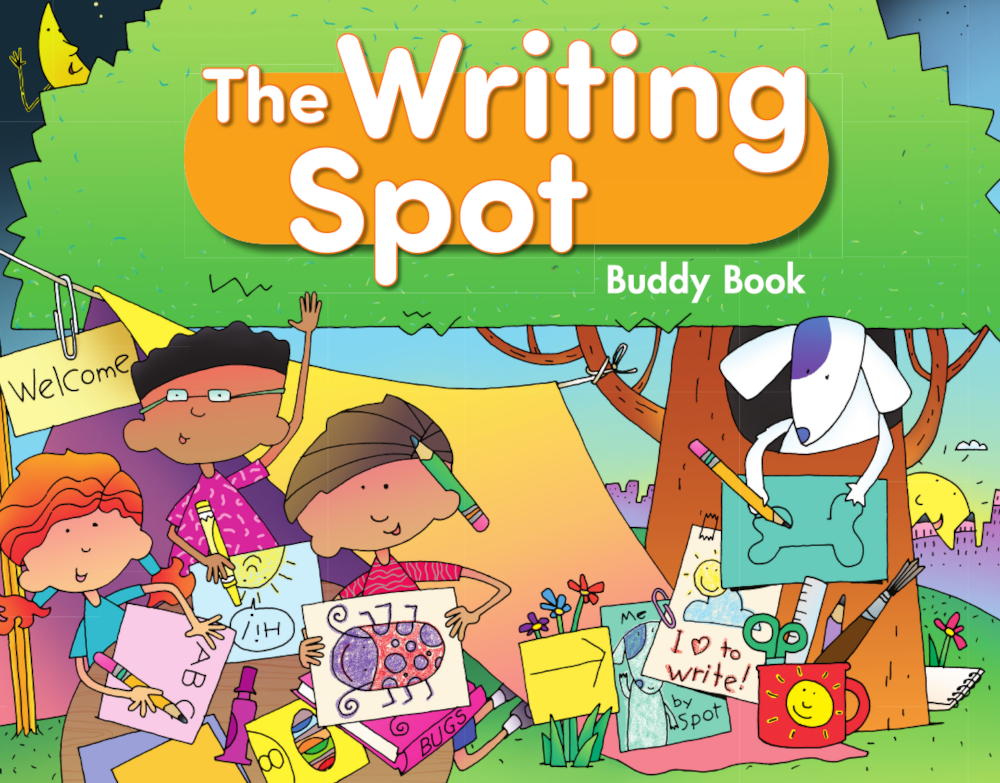
Take a Tour!
Page through the Buddy Book in one of these ways:
What's in the free online Teacher's Guide?
The Writing Spot Teacher's Guide includes sequencing assignments, yearlong timetable, getting-started activities, page-by-page guide to the Big Book and Buddy Book, help for writing assessment, research basis, and activities and handouts.
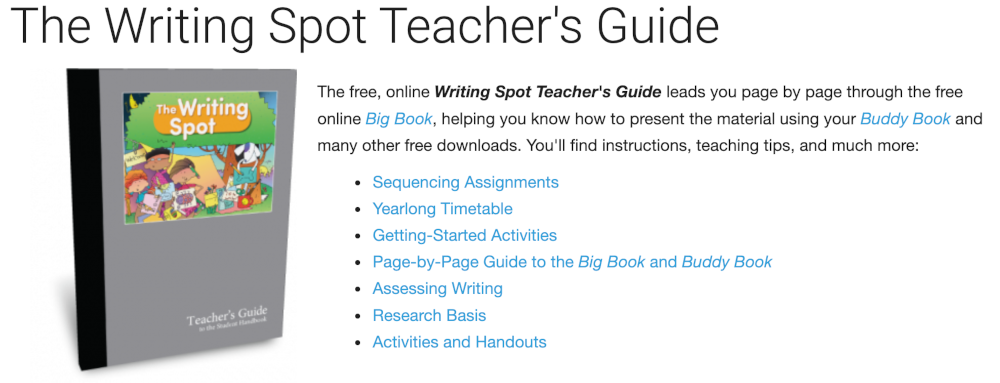
You can get to the Teacher's Guide by going to k12.thoughtfullearning.com and clicking on "Teacher's Guides" in the top banner.

Take a Tour!
Page through the free online Teacher's Guide on any device with Internet access—no sign-in needed.
How do these components work together?
Here's one sample way that you might organize the first six weeks of instruction in your classroom, drawn from the "Yearlong Timetable" in the Teacher's Guide:
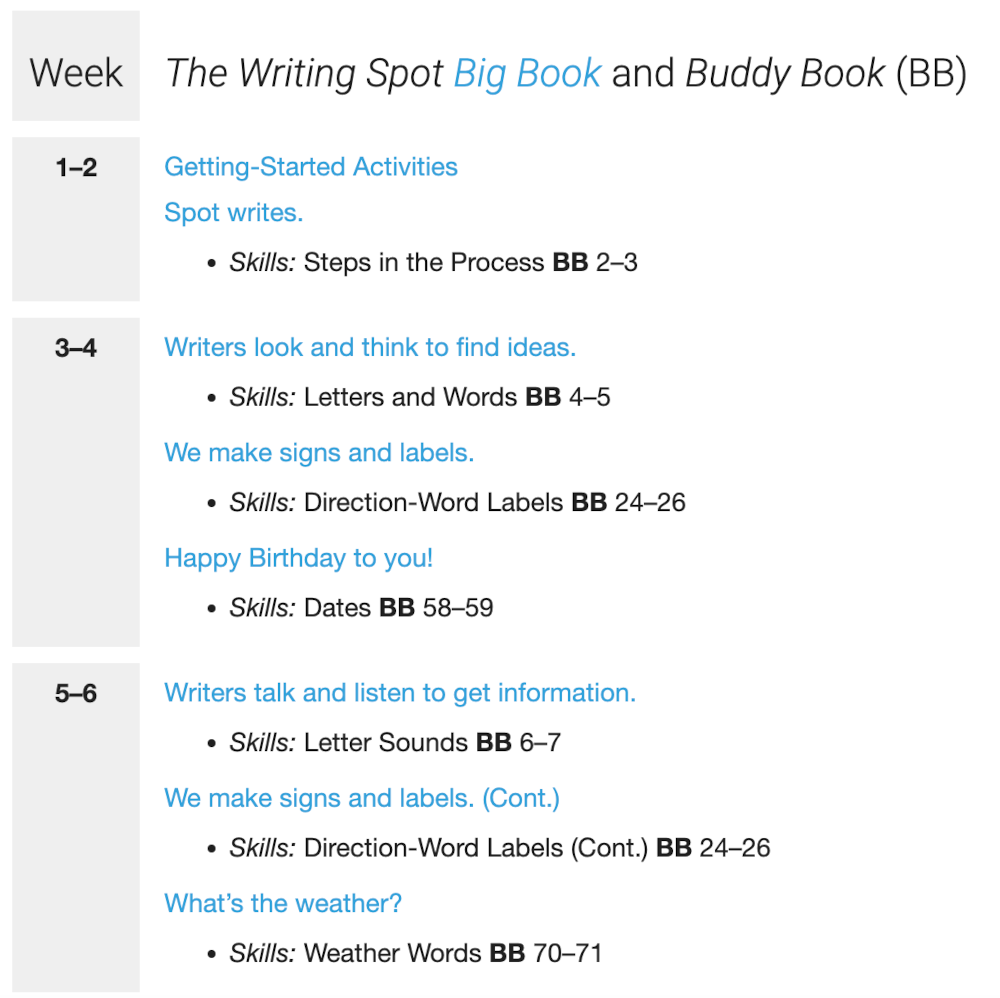
Each link takes you to the page-by-page support in the Teacher's Guide, including access to the correct Writing Spot Big Book page. The BB numbers refer to corresponding activity pages in the Buddy Book. Here's one suggested teaching plan:
- Weeks 1–2: Go to "Getting Started Activities," where you will find a week's worth of writing instruction and downloads meant to introduce your students to writing. In the second week, display "Spot writes," reading the poem to students and leading a discussion of Spot's own writing spot. Talk about places students might like to write, in school, at home, and elsewhere. Then have students draw their own writing spots and write about them (in whatever way they can) on Buddy Book pages 2–3..
- Weeks 3–4: Present "Writers look and think to find ideas." Discuss all the looking and thinking going on in the image. Then have students do their own looking and thinking with Buddy Book pages 4–5. Next, present and discuss "We make signs and labels." Have students create their own signs and labels on Buddy Book pages 24–26. Afterward, present and discuss the "Happy Birthday to you!" theme pages. Have students practice birthday vocabulary with Big Book pages 58–59.
- Weeks 5–6: Present and discuss "Writers talk and listen to get information" followed by Buddy Book pages 6–7. Next, review "We make signs and labels" and have students create more. Introduce and discuss "What's the weather?" and have students practice weather words with Buddy Book pages 70–71.
How can I get started with these materials?
Download the The Writing Spot Program Sheet. The first page provides an overview of what you have just learned about the three components. The second page gives you a simple four-step process for launching the program in your classroom—getting you and your students comfortable with The Writing Spot.

